Content
Personalization And Customization In E-commerce: What is the Difference?

Time to read: 20 minutes
The e-commerce industry is booming, and it's no wonder that businesses are investing in personalization and customization. According to a 2022 survey from Adobe, 67% of respondents say they would like to receive personalized promotions or offers based on their shopping habits when shopping online. With this in mind, e-commerce companies must understand the difference between personalization and customization to provide their customers with the best possible experience.
Personalization and customization are effective strategies for e-commerce businesses to provide a more tailored shopping experience. However, it's essential to understand the difference between the two concepts to maximize your e-commerce potential. This article will explain personalization and customization and how e-commerce companies can utilize both strategies to provide a more tailored shopping experience.
What is Personalization in E-commerce?
Personalization in e-commerce is the process of customizing the experience of an e-commerce website to align with the needs and preferences of an individual shopper. This could include showing personalized product recommendations, tailored content, or special offers based on a customer’s past purchases or browsing behavior. Personalization helps e-commerce stores create more personalized shopping experiences, increasing customer satisfaction and loyalty.
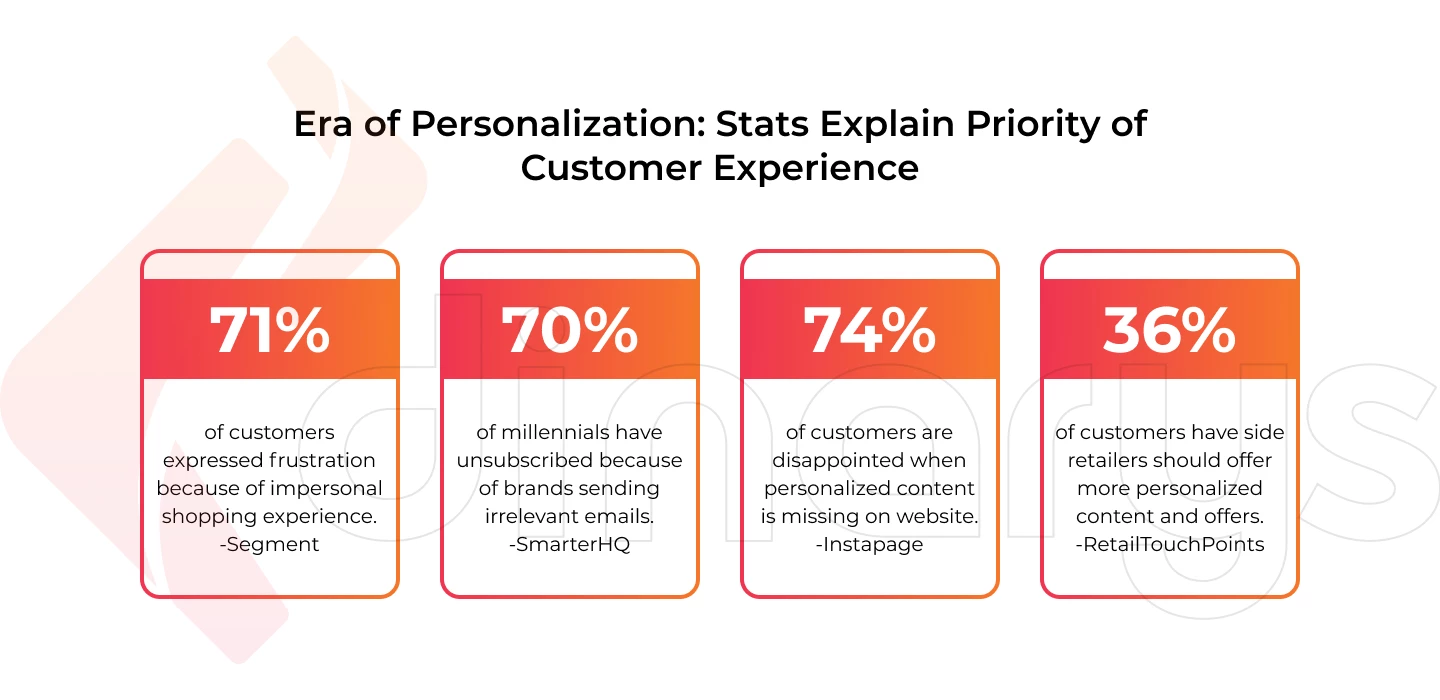
Personalization requires e-commerce businesses to understand their customers’ needs and preferences. This means collecting data on the items they have purchased or the products they are interested in. It can also involve tracking customer browsing behavior and using AI algorithms to recommend relevant content or products based on that behavior. By leveraging customer data, e-commerce businesses can create personalized customer experiences and increase sales.
Personalization is becoming an increasingly important part of e-commerce as shoppers become more accustomed to having tailored experiences online. It is essential for e-commerce stores to understand their customers’ needs and preferences to create personalized shopping experiences. This will help e-commerce stores stand out from their competitors and keep customers coming back for more.
You may also like: E-commerce Personalization Trends to Follow in 2023.
E-commerce Personalization Examples
E-commerce personalization examples are all around us. You can see personalized recommendations on e-commerce websites, tailored product descriptions for specific customers, and dynamic content based on previous customer behavior. Here are some of the most common e-commerce personalization examples:
Personalized Recommendations
Product recommendations that are tailored to the individual customer’s interests and tastes. This can be based on past purchases, browsing history, or demographic data. Any e-commerce platform with an AI-powered recommendation engine can provide personalized recommendations to customers.
Here are some tips on how to make the most of e-commerce personalization with personalized recommendations:
- Segment customers based on past purchases, browsing habits, and other data points.
- Use AI algorithms to create a personalized profile for each customer.
- Personalize recommendations by leveraging customer segmentation and AI algorithms.
- Regularly update the customer’s profile data to ensure relevant recommendations.

Dynamic Pricing
A pricing strategy that dynamically adjusts prices based on product availability, customer segmentation, and other factors. E-commerce stores can use this to create a more competitive and engaging shopping experience for customers by adjusting prices for products or services in real time.
Use this e-commerce personalization example to get the most out of dynamic pricing:
- Segment customers based on their purchase history, demographics, and other data points.
- Analyze customer segmentation and product availability data.
- Set up automated triggers to adjust prices in real-time.
- Monitor performance regularly and adjust pricing as needed.

Personalized Product Descriptions
Product descriptions tailored to the individual customer’s interests and needs. E-commerce stores can use AI algorithms to analyze customer data and create personalized product descriptions that are more engaging and relevant to customers.
Here are some tips on how to make the most of e-commerce personalization with personalized product descriptions:
- Analyze customer data to identify preferences and interests.
- Use AI algorithms to create relevant, personalized product descriptions.
- Update the product description regularly to ensure its relevance.
- Monitor performance and adjust the product description if needed.
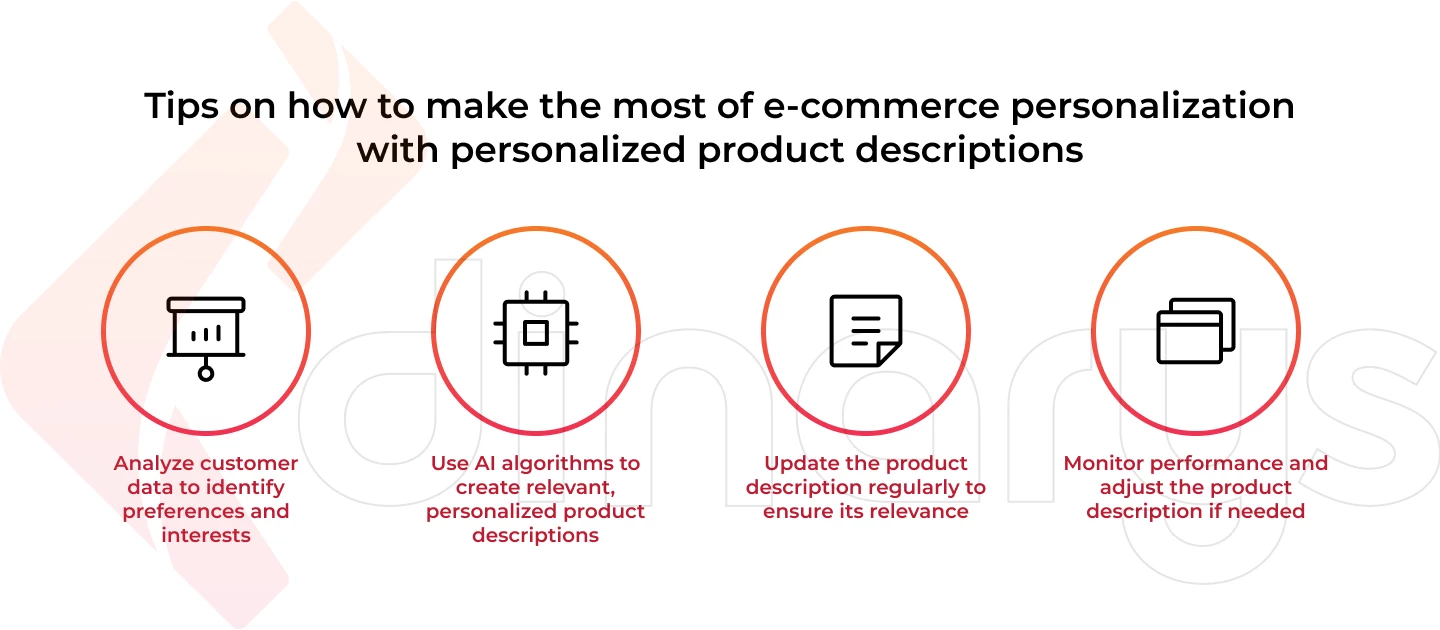
Don’t miss out, Dinarys’ Comprehensive Guide to Choosing Website Personalization Tools!
Saved Searches
The e-commerce platform can save customers’ search queries and send notifications when new products matching their criteria become available. This is especially useful for e-commerce stores with a large inventory or frequent product updates.
Use these e-commerce personalization examples to get the most out of saved searches:
- Analyze customer search queries and behavior.
- Set up automated triggers to send notifications when new products matching their criteria become available.
- Monitor performance regularly and adjust parameters as needed.
- Use AI algorithms to recommend similar products or related product categories.

Automated Emails
E-commerce stores can use automated emails to send personalized messages to customers. For example, e-commerce stores can use automated emails to announce upcoming promotions or sales or to recommend products and services based on the customer’s past purchases.
Here are some tips on how to make the most of e-commerce personalization with automated emails:
- Segment customers based on past purchases and other data points.
- Leverage AI algorithms to create personalized emails for each customer segment.
- Regularly update the customer’s profile data to ensure relevant messages.
- Monitor performance regularly and adjust parameters as needed.
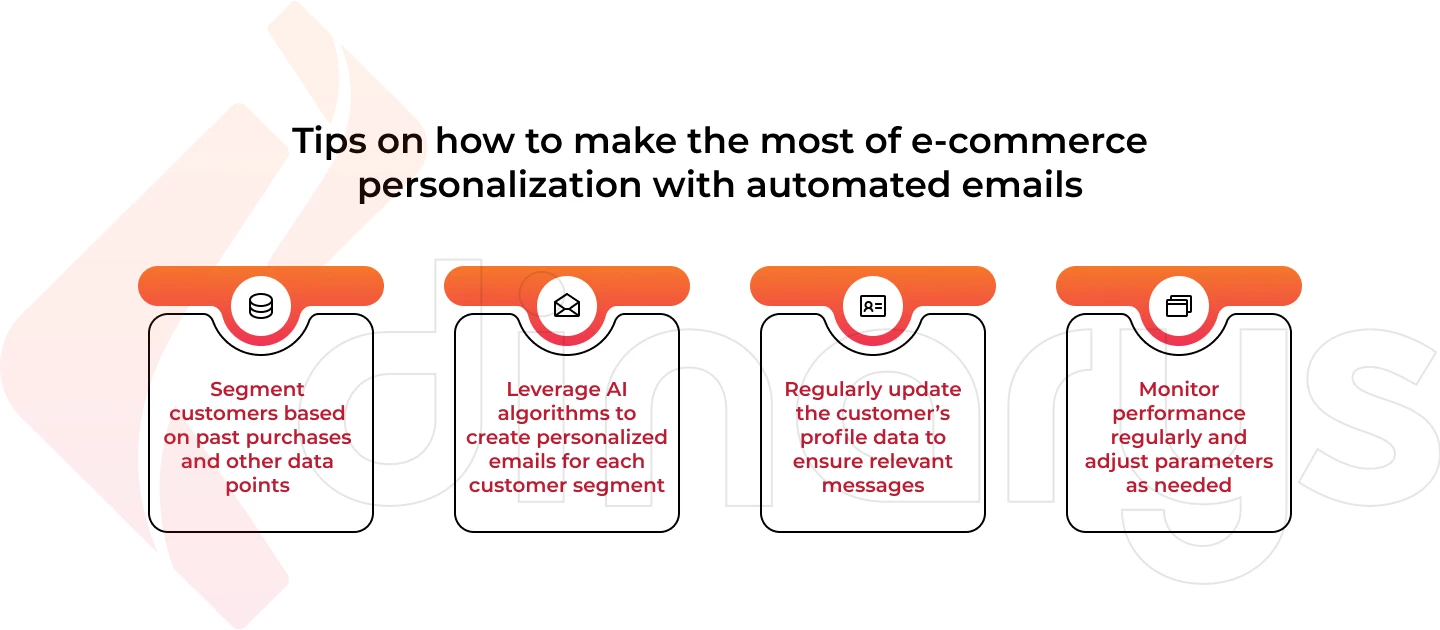
Customized Product Description
Many e-commerce sites offer customers the ability to customize product descriptions. This allows them to choose what information is displayed, such as size and color options or specific features of the product.
Use these e-commerce personalization examples to get the most out of customized product descriptions:
- Analyze customer preferences and behavior.
- Set up automated triggers to display specific information based on customer preferences and data points.
- Monitor performance regularly and adjust parameters as needed.
- Use AI algorithms to recommend similar products or related product categories.

By leveraging e-commerce personalization examples like these, e-commerce stores can create a more engaging and relevant shopping experience for customers. Personalized product recommendations, dynamic pricing, personalized product descriptions, and saved searches are ways e-commerce stores can use e-commerce personalization to engage with customers. With the right e-commerce personalization strategy, e-commerce stores can create a more satisfying and prosperous shopping experience.
Don’t miss this article in our blog: 7 Best Personalization Tools to Use.
What is Customization in E-commerce?
Customization in e-commerce involves enabling customers to personalize the products they purchase, such as choosing different colors or adding custom messages. This differs from personalization, which focuses on creating tailored experiences for individual customers based on their past purchases or browsing behavior.
Customization allows e-commerce stores to meet customers' specific needs and provides a unique shopping experience. It also helps e-commerce businesses differentiate themselves from competitors, as they can offer products tailored to their customers' needs.
Customization has become increasingly important in e-commerce as shoppers demand more personalized products and services. Many e-commerce stores now offer customers the ability to customize products, such as shoes or phone cases, with their designs or messages. This allows e-commerce stores to stand out from their competitors and stay ahead of the competition.
TOP e-commerce customization features:
- Custom product pages
- Custom product images
- Personalized recommendations
- Customizable products
- Ability to upload custom designs
- Custom order tracking
- Personalized text messages
- Live chat feature for customer service.
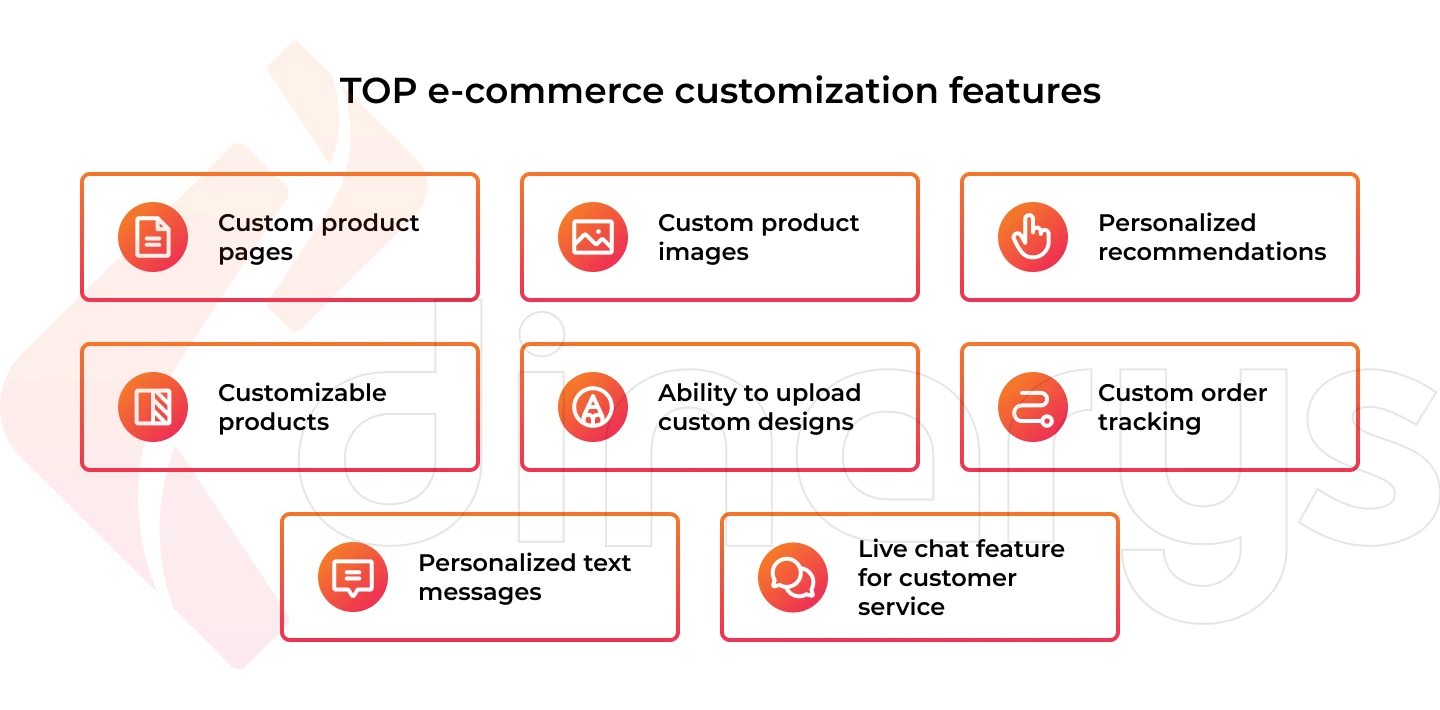
So, e-commerce customization is essential for e-commerce businesses as it helps them differentiate their products and services from competitors. It also allows e-commerce stores to meet the specific needs of their customers, providing a more personalized shopping experience. By leveraging e-commerce customization features, e-commerce stores can create unique customer experiences that will keep customers returning for more.
E-commerce Customization Examples
Customization is a process that allows e-commerce shops to offer customized products. The goal is to give customers more control over product design and features and make the shopping experience more personal. There are many ways e-commerce stores can use customization to create unique and personalized customer experiences. Here are a few e-commerce customization examples:
Online Product Configuration
This e-commerce customization option allows customers to select features, such as color and size when purchasing products. For example, an online store might let customers choose the length and width of a custom bike frame.

This is how Apple’s online store allows customers to customize their AirPods with emojis.
Online Design Studio
This e-commerce customization feature lets customers design products from scratch using various tools and materials provided by the e-commerce store. For example, Nike’s online store provides custom shoes that can be designed with various colors and materials.
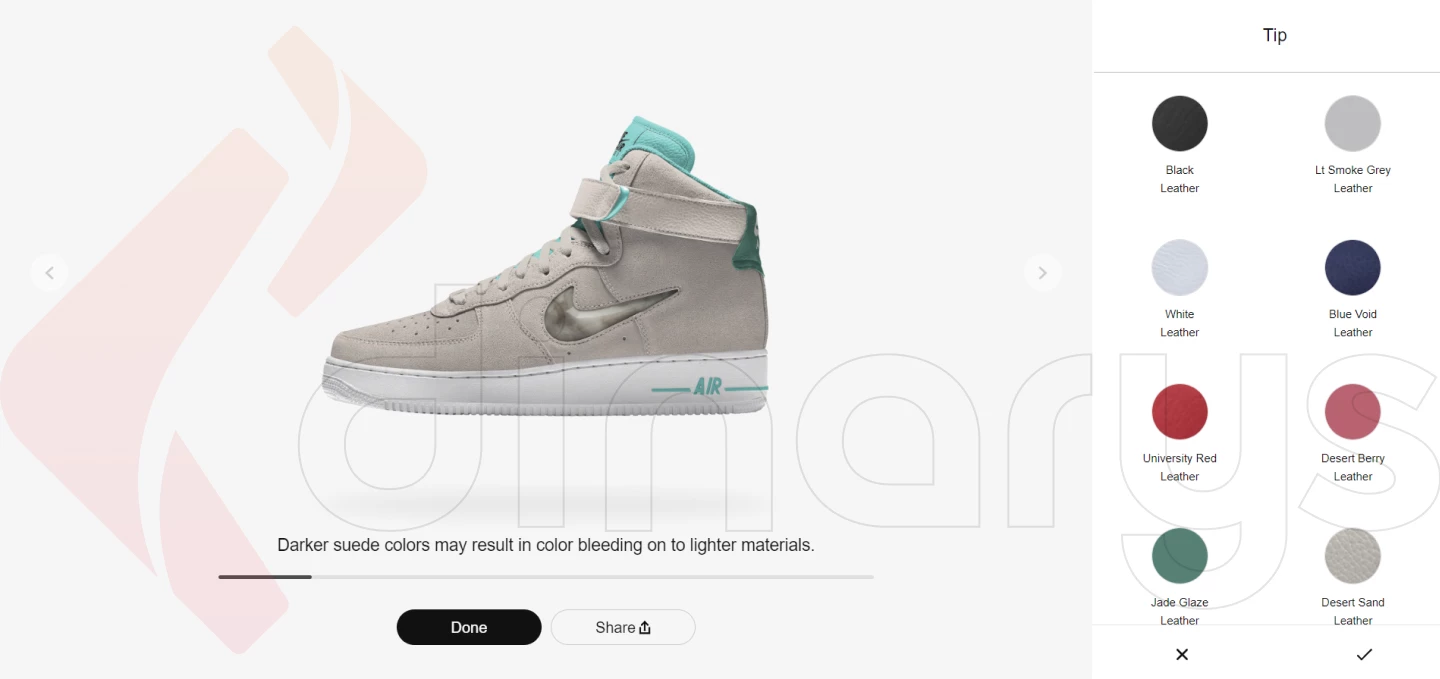
Personalized Shopping Experience
This e-commerce customization option helps e-commerce stores create a personalized shopping experience for customers. For example, an e-commerce store might use machine learning algorithms to suggest products based on past purchases or browsing history. This helps create a more tailored shopping experience for each customer.
For example, Amazon’s personalized e-commerce experience allows customers to view product recommendations based on previous purchases and reviews.
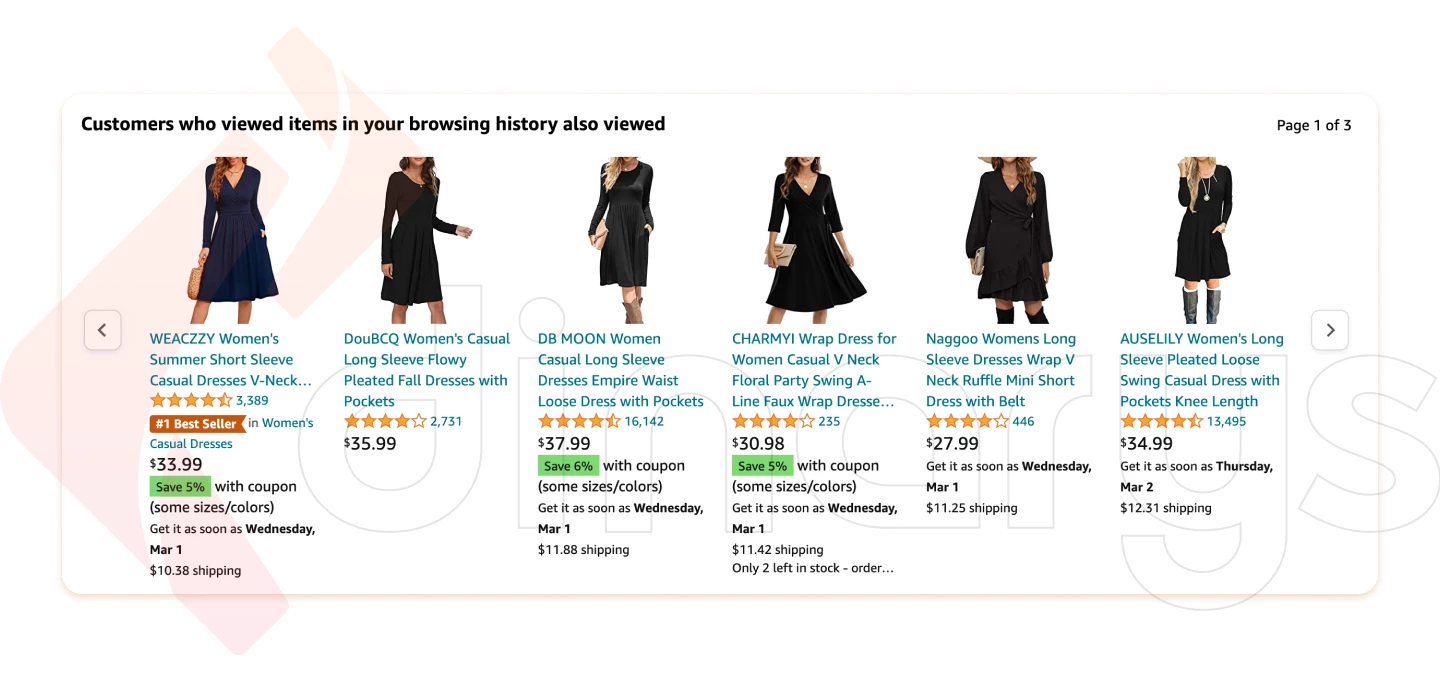
Marketplace Personalization
This e-commerce customization option allows e-commerce stores to personalize the shopping experience on their marketplace. For example, an e-commerce store might offer personalized product recommendations based on customer interests or even customize product listings based on each individual’s preferences. This helps e-commerce stores create a more personalized and engaging customer shopping experience.
Tailored Product Reviews:
This e-commerce customization option allows e-commerce stores to customize product reviews and ratings based on customer profiles. For example, an e-commerce store might include customer profiles in their product reviews to give customers a more personalized view of the products they are considering purchasing.
These are just some ways e-commerce stores can use customization and personalization to create unique and tailored customer experiences. Using these e-commerce customization examples and strategies, e-commerce shops can give customers more control over their purchases while providing them with a truly unique shopping experience.
Personalization vs Customization: Distinctive Differences
When it comes to e-commerce, understanding the differences between personalization and customization is essential. While both involve tailoring products or services for individual customers, there are some key distinctions:
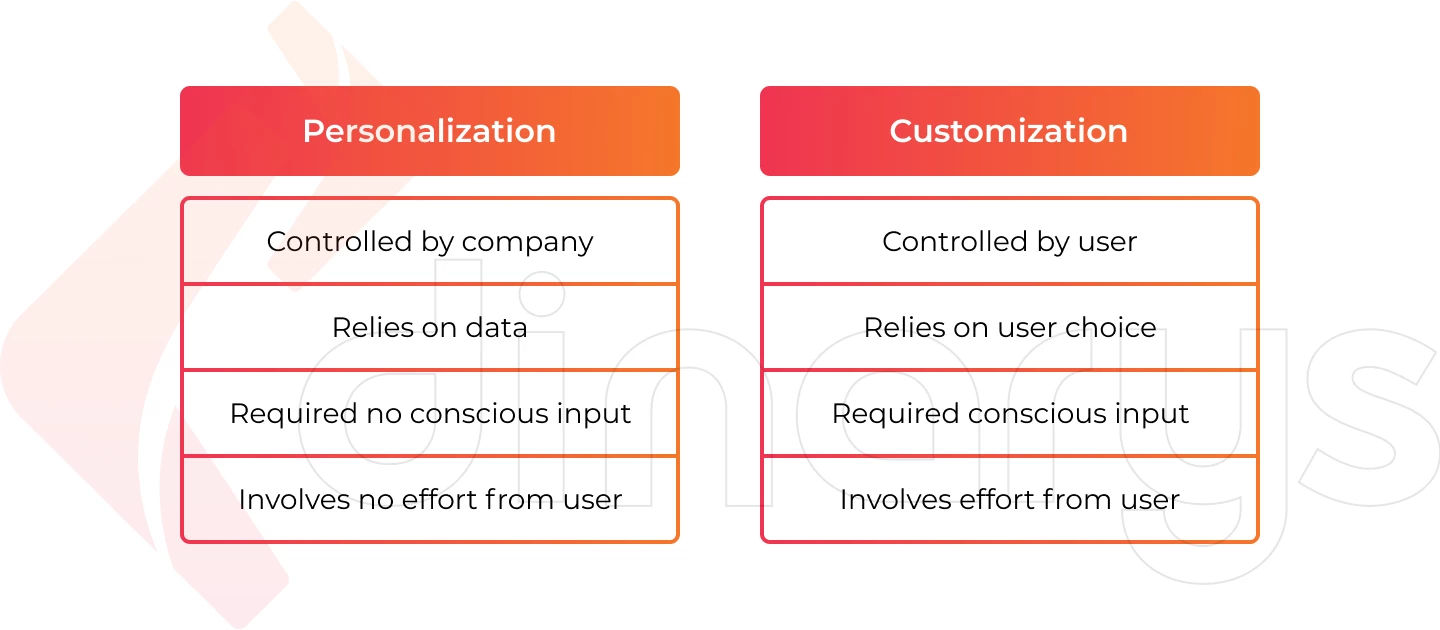
Personalization typically focuses on the customer’s buying habits, while customization deals with product features and options.
Personalization provides customers with a personalized shopping experience by leveraging data to tailor suggestions and recommendations based on their past purchases or browsing history. For example, e-commerce sites may use personalization technology to customize website design or suggest products most likely to interest a particular customer. Personalization is an effective way to build loyalty and encourage repeat buying.
On the other hand, customization revolves around providing customers with the ability to customize product features and options according to their individual preferences. Customized e-commerce solutions give customers more control over the customization process and ensure that the product they receive is exactly what they want. Customized e-commerce experiences also offer customers a unique way to express themselves, which can increase customer engagement.
Personalization focuses on convenience, while customization prioritizes uniqueness.
Personalization technology makes it easier for customers to shop online and find their desired products. It helps e-commerce sites offer customers a more convenient and personal shopping experience by providing tailored product suggestions, reminders, discounts, or other services that make it easier for customers to complete their purchases.
On the other hand, customization is about creating a unique product that reflects customer preferences. By allowing customers to customize product features and options, e-commerce sites can help them create a one-of-a-kind item that will be truly special to them. This type of e-commerce experience encourages customer loyalty and strengthens brand identity.
Personalization focuses on the customer’s needs, while customization focuses on the product.
Personalization is all about understanding and responding to the individual needs of customers. E-commerce sites can leverage personalization technology to understand each customer’s preferences better and offer tailored suggestions, discounts, or other services to help them complete their purchase.
Customization, however, is focused on the product itself. By allowing customers to customize their products according to their individual needs and preferences, e-commerce sites can provide a truly unique shopping experience that will keep customers coming back for more.
By understanding the distinctions between personalization and customization in e-commerce, businesses can better determine the best strategies for delighting their customers and providing them with a seamless shopping experience. By leveraging personalization and customization technologies, e-commerce sites can create an online environment where every customer feels valued and respected, increasing customer loyalty and satisfaction.
Personalization encourages repeat purchases, while customization encourages customer engagement.
Personalization technology helps e-commerce sites understand customers' past buying habits and offer tailored suggestions or discounts to encourage them to purchase again. This type of e-commerce experience is an effective way for e-commerce sites to build loyalty and gain loyal customers.
On the other hand, e-commerce sites that offer customization options allow customers to create a one-of-a-kind product, which encourages engagement and creates an emotional connection between customers and their purchases. This e-commerce experience is valuable for business owners who want to increase customer engagement and strengthen brand identity.
In conclusion, e-commerce sites that want to provide customers with a seamless and engaging shopping experience should consider leveraging personalization and customization technologies. By understanding the differences between personalization and customization in e-commerce, businesses can leverage the right strategies for delighting their customers and increasing customer loyalty.
Cultivating a personalized and customized e-commerce experience can help e-commerce sites stand out from their competitors and create an environment that encourages customers to return. Through personalization and customization in e-commerce, businesses can provide customers with a unique shopping experience that will ensure customer satisfaction for years to come.
Personalize or Customize for the Customer?
When it comes to e-commerce, businesses should consider both personalization and customization for their customers. Personalization is often seen as more cost-effective than customization, especially when dealing with limited budgets.
Personalization involves tailoring the online shopping experience to each customer by leveraging data collected from prior visits or interactions. It includes delivering content, products, and services tailored to customers' needs and preferences. This can be done through automated content recommendations, e-mail newsletters, and personalized search results.
On the other hand, customization is more of an interactive experience where customers can customize products or services based on their own individual specifications. Customizing e-commerce products could enable customers to add their logo, text, or images to a product. For example, e-commerce stores might offer custom T-shirts where customers can choose from a variety of colors and sizes as well as upload their designs.
E-commerce personalization and customization have become increasingly crucial for businesses looking to boost customer engagement and loyalty. Personalization can help build customer relationships by providing tailored experiences and content. On the other hand, customization gives customers more control over their purchases by allowing them to create one-of-a-kind products or services.
By leveraging personalization and customization in e-commerce, businesses can provide an enhanced customer experience. This will not only help keep customers returning for more, but it can also help increase sales and grow a loyal customer base.
E-commerce businesses must determine which approach is best for their business model and customer base. Personalization may be more cost-effective than customization in some cases, but customization can also provide an enhanced customer experience that will help to differentiate a business from the competition. Both approaches should be evaluated when considering e-commerce strategies and implemented as needed to provide customers with the best possible shopping experience.
Bottom Line
E-commerce personalization and customization are essential for businesses looking to enhance customer engagement and loyalty. Personalization is more cost-effective than customization, but both approaches can help e-commerce businesses stand out by providing customers with tailored experiences. Businesses should evaluate which approach is best for their business model and customer base to provide the best e-commerce experience.
By leveraging e-commerce personalization and customization strategies, businesses can access various opportunities to grow their e-commerce business and increase customer satisfaction. Dinarys e-commerce experts can help e-commerce businesses maximize the potential of personalization and customization for e-commerce success. Contact us today to learn more about e-commerce personalization and customization strategies.
Let professionals meet your challenge
Our certified specialists will find the most optimal solution for your business.

